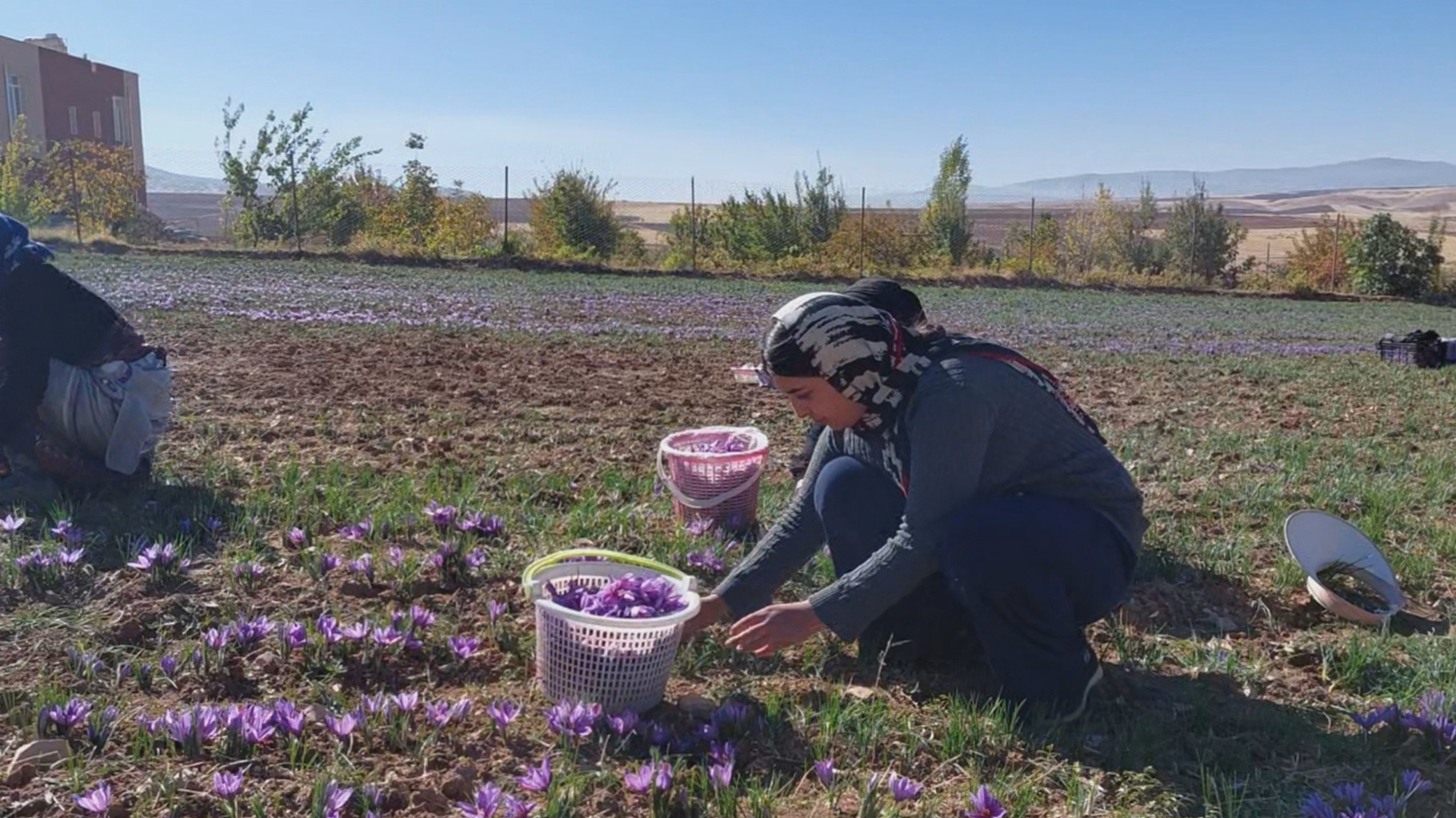Kermanshah's "Red Gold": Saffron Harvest Flourishes in Eastern Kurdistan
Kermanshah Province in eastern Kurdistan has begun its saffron harvest, with production expected to reach five tons this year. Cultivation area has expanded from 50 to 810 hectares over 12 years, driven by the crop's economic viability and low water requirements.

ERBIL (Kurdistan24) – The saffron harvest season has begun in Kermanshah Province in eastern Kurdistan, where farmers are gathering the delicate purple blossoms of the world’s most precious spice. Agricultural officials and local growers report that production this year is expected to reach nearly five tons, reflecting a steady rise in saffron cultivation across the region in recent years.
Over the past few days, farmers in various districts of Kermanshah have started hand-picking saffron flowers, a meticulous process carried out before sunrise to preserve the quality of the crop. The cultivation of saffron has rapidly expanded in recent years, with Kermanshah now ranking among the leading producers in eastern Kurdistan.
Beyond the provincial capital, saffron is also cultivated in Dalaho, Sonqor, Sahne, Hersin, Kangavar, and Gilan. Many of the farmers engaged in this trade come from the Yarsan community, which has played a significant role in reviving traditional agricultural practices in the area.
According to official statistics, the total cultivated area for saffron in Kermanshah has increased dramatically over the past 12 years — from 50 hectares to 810 hectares, including 365 hectares within the city’s administrative boundaries.
Farmers anticipate that this year’s production will reach around five tons, a record figure for the province.
Local farmer Hassan Fatehi, who has been cultivating saffron for the past 12 years, said the province’s climate and soil are ideally suited for the crop.
“The weather conditions here are perfect for saffron cultivation,” Fatehi told Kurdistan 24. “Compared to wheat, chickpeas, or other crops, saffron brings higher income, which is why many of us have shifted to growing it.”
Another farmer, Saeed Piri, emphasized the economic benefits of saffron cultivation, noting that many residents have turned to it due to water scarcity in the region.
“Given the low water requirements, more and more people are planting saffron each year,” Piri said.
Experts describe Kermanshah’s saffron as among the highest quality varieties in the world, prized for its color, aroma, and purity. With 310,000 hectares of arable land, Kermanshah has significant potential to become a major global center for saffron production.
Agricultural specialists stress that investment in processing and export infrastructure could transform the saffron industry into a key source of income and employment for local communities.
If modern packaging, processing, and marketing facilities are developed, they say, saffron could soon become one of Kermanshah’s leading economic sectors, offering both domestic prosperity and new opportunities in international markets.
